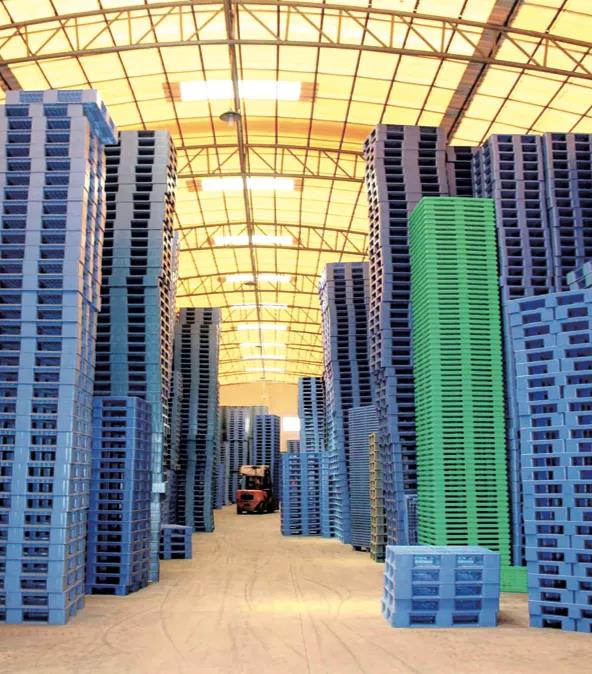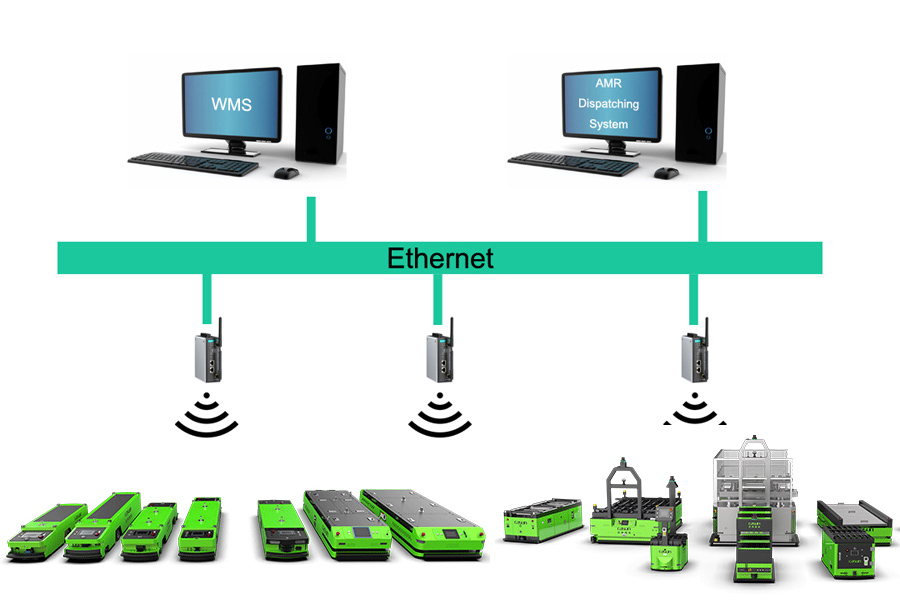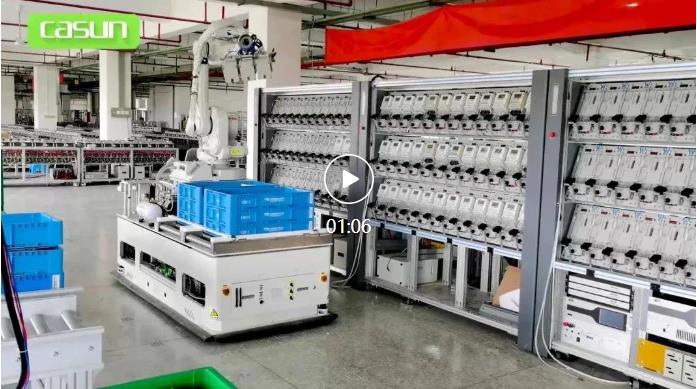As an important loading and unloading, storage, and transportation equipment in the logistics operation process, pallets are widely used in production, transportation, storage and circulation, and other fields, and they are also relatively large consumables for many enterprises. At present, there are various types of products such as wooden pallets and plastic pallets on the market. Aiming at how companies choose suitable pallets, this article analyzes the five key elements of durability, strength, rigidity, function, and price.

Pallets are widely used in logistics operations and are relatively large consumables for many companies, which cost a lot of money. When selecting pallets, enterprises should fully consider the five key elements of durability, strength, rigidity, function, and price to form a benign pallet asset management process, thereby reducing maintenance costs and ensuring transportation safety.
1. Durability
1.1 Pallet life cycle cost
This is the most easily overlooked selection index for pallets.
In complex logistics links, pallets should have an ideal service life as a unit container. However, for a long time, pallets are mostly made of cheaper and fragile materials, and users have formed inertia. After many companies purchase pallets, they will be accounted for The subject of “low-value consumables” is written off. As an important asset, it does not do asset management, only input accounts, and existing inventory data may be inaccurate or missing.
The broad “product life cycle cost” includes the cost of use, disposal, and disposal incurred by consumers after purchase. From a broader perspective, the life cycle cost of a product also includes social responsibility costs. Social responsibility cost is not a single cost. It is a cost that runs through the process of product production, use, treatment, and recycling. It is mainly the cost of environmental sanitation and pollution treatment.
In the useful life of the asset, it is necessary to decide how to maintain and operate the asset based on the circumstances in which the relevant asset may have an impact on the remaining life of the asset. If the asset life can be doubled by increasing the investment in maintenance costs by 10% each year, this may be a worthwhile investment.
Other issues that affect asset life cycle costs include site conditions, the historical performance of assets or materials, effective monitoring techniques, and appropriate intervention strategies.
In view of the abstraction of the above concepts, here are only two examples to illustrate. For example, in the fast-moving industry transfer center with frequent turnover, the wooden pallets are damaged too quickly, and the repairable advantages are not shown. Although the purchase price is low, the long-term use cost is not low; for example, the user did not carefully evaluate the material composition and Separation costs, when the pallet is scrapped, it is found that not only the residual value is not obtained, but also additional disposal costs are required, and so on.
For many companies, pallets are relatively bulky consumables. When selecting pallets, companies should evaluate their service life in advance, and the focus is not on procurement costs but on usage costs. In the process of use, a ledger should also be established for asset management. Regular inventory and assessment of asset conditions, provide feedback and suggestions for subsequent purchases, and form a benign tray asset management process.
1.2 Pallet recovery rate
If the company’s pallets participate in pallet transportation, it needs to consider the balance between the recovery rate, recovery cost, and procurement cost; there are many ways to achieve pallet recovery, or participate in the cycle of the entire supply chain, or bring back empty vehicles. The cost of recovery takes into account the pallet input method.
1.3 Pallet residual value
Many user companies have not considered the scrap, recyclability, and residual value of the pallets when purchasing pallets. It is recommended that these factors be considered when selecting pallets, which will greatly affect their selection criteria. Some pallets have no residual value after being scrapped, and a garbage disposal fee needs to be paid. Some pallets have a residual value as high as one-third or more of the new product price after scrapping.
Treat the pallet as an asset instead of a consumable, and use the product’s life cycle cost to evaluate the input and output. Taking into account the residual value of the pallet, the cost formula can be revised as:
Pallet usage cost (C) = [pallet purchase cost (F)-pallet residual value (R)] / service life (T)
2. Strength
Strength is also an indicator that is easier to be “scorned”.
The strength of the pallet is related to its durability and safety. When purchasing pallets, users of pallets will choose pallets that match the weight of the goods, but only the load-bearing capacity factor is not enough to judge whether the pallets are reusable, and many users make mistakes. “Rigidity” is regarded as “strength”. We suggest here that “strength” and “stiffness” should be considered as a dimension. A detailed evaluation will avoid many detours.
“Strength” refers to the firmness, toughness, and durability of the tray, as well as the ability to resist external forces, penetration, and corrosion. It is recommended to focus on these indicators:
2.1 Impact resistance
Each part of the pallet must have a corresponding strength that has been designed. ISO standards and Chinese national standards have detailed test standards. It is recommended that users try to obtain a third-party test report when selecting them. If necessary, they can conduct random inspections and test items. Including corner drop test, top plank edge impact test, cushion impact test.
It is worth noting that these test items have national standards that can be referred to, and they are also test items that can be compared when selecting pallets. When selecting pallets, users should set the national standard as the basic selection standard and compare the corresponding indicators of different products in order to select The price-performance ratio is most suitable for your pallet.
2.2 Repairability
The repairability of pallets is a solution to insufficient strength. In complex application environments, pallets experience various impacts, drops, frictions, and pressures, blindly requiring high strength and no damage, which will inevitably increase the purchase of pallets. Cost, if the pallet itself is repairable, the service life of the pallet can be increased and the purchase cost can be reduced.
While repairable, the cost of repair should also be evaluated. For example, wooden pallets can be repaired by replacing wooden boards, but it will consume wood and repair man-hours. This part of the cost should be included in the pallet usage cost.
2.3 Durability
“Durability” mainly refers to indicators that are relatively minor but affect product life, such as resistance to corrosion, weathering, and wear. At present, many pallet materials are used, regardless of metal, plastic, wood, or new composite materials. There are issues in this area that need to be considered. No matter how the manufacturer claims that its products are durable, the products have their life cycles, and this cycle should be done. Pre-assessment.
2.4 Environmental adaptability
There are various environments in which the tray is used, mainly referring to the adaptability of the tray to temperature and the influence of temperature difference on the life of the tray. Many northern users have painful memories of this. They bought the pallets well, but they will be scrapped after only one winter.
We already know that low temperatures, especially ultra-low temperatures, can cause serious damage to wooden pallets and plastic pallets. Wooden pallets are mainly due to low-temperature expansion of moisture content, which damages wood fibers and causes wood powder. Plastic materials have a theoretical working temperature. As the temperature decreases, various physical indicators of plastics will change, and the carrying capacity of plastic pallets in low-temperature environments will change. There is a substantial decline, and the material properties of plastic materials will change after low temperature, and some materials are prone to powdering and failure.
At present, there are new types of plastic materials with better environmental temperature resistance, which deserve attention.
3. Stiffness
“Rigidity” is different from “strength”, which is easy for users to confuse. Here, “stiffness” mainly refers to the bending and compression resistance of the tray.
The pallet can carry goods and complete tasks in various process links, such as forklift during forklift operation, load during shelf storage, and in the case of insufficient rigidity, the pallet deforms beyond the standard, and even irreversible plastic deformation occurs, causing product failure.
It is worth mentioning that the pallet stiffness data can be divided into “limit load” and “rated load”. The “rated load” data is generally used when selecting the pallet. If the manufacturer can provide the ultimate load test data, it can be used as a reference. Half of the limit load data is used as the rated load data, but not all of it. Several indicators for general pallet stiffness to be considered are:
Static load: The pressure data when stacking on the flat ground mainly tests the compression performance of the pallet foot piers or supporting parts. In the national standard testing project, the stacking test data is mainly taken, including the compression resistance of the plank and the compression resistance of the cushion, and the simulation is the maximum or a rated load of the pallet on the flat ground.
Dynamic load: In the national standard test project, the test data of the forklift test in the bending test is mainly taken. The support part of the forklift test is under the top deck and the standard fork width is used.
Shelf load: It takes the test data of the shelf load in the bending test, and the support part is under the bottom plank to simulate the detection of the deformation of the tray supported by the rack beam.
The specific testing standards and methods are detailed in the “GBT 4996-2014 Intermodal General Flat Pallet Test Method”, which is worthy of our time to study carefully.
Please also note that the anti-bending test standard has a long history, the data is more suitable for manual forklift operations and flat warehouses, and it is more specific to the performance of wooden pallets. With the improvement of logistics automation, when the three-dimensional warehouse uses pallets, these national standard test data may not be applicable, or the national standard test is a basic test item, and other test items should be added for special purposes. Therefore, when selecting pallets, it is necessary to solicit the technical requirements of peripheral equipment manufacturers and plan and test according to their actual needs.
In addition, in order to ensure the rigidity of the pallet, many pallets use metal-reinforced structures, such as steel pipes, steel pads, metal bolts, etc., and attention should be paid to the anti-corrosion treatment of these metal components.
4. Function
Pallets carry goods and must be dynamically considered. Is the function sufficient and applicable in each logistics link it experiences? This is also easy to be ignored by users, basic functions such as shelf loading, stackable, nestable, auxiliary functions such as anti-skid, strapping, etc.
4.1 Can be loaded on the shelf: pallet goods are loaded on the shelf, some points should be noted:
- Types of racks, different racks have different requirements for the load of pallets. For ordinary beam racks, if safety devices such as layer nets are added, the pallet load can be reduced and the overall cost can be reduced; some types of racks, such as push racks, etc., pallets It is not stored in the air, and has relatively loose requirements for the pallet load.
- The size of the shelf and the goods should be coordinated in accordance with industry standards. Too wide or too narrow may cause difficulty in use, or safety risks.
4.2 Stackability:
When many goods are stored, transported, or temporarily stored, they are stacked in order to save the land. Two or more layers are required. This requires that the bottom of multiple trays is sufficiently stable when contacting the goods. Choose Tianzi or double-sided trays to solve this problem.
4.3 Nestable:
When empty pallets are stacked and recycled, the nestable pallets will save storage space. Nine-legged pallets with a certain slope cavity can be nested.
4.4 Four-way feeder:
Many users have not noticed the difference between a two-way feeder and a four-way feeder. The stringer of the two-way feeder pallet has no breakpoints, which can save materials. The overall cost will be much lower, but there is no four-way feeder. A fork will affect many logistics links, may increase logistics costs, and even cause major losses, so you must pay attention.
4.5 Anti-slip performance:
Anti-slip properties include the non-slip surface of pallet, anti-slip of fork tines for forklift handling, and anti-slip of the bottom plate of ground and conveyor. Generally speaking, wooden pallets have good anti-slip performance, but plastic materials have poor anti-slip performance. Generally, anti-slip devices such as anti-slip mats and anti-slip strips are required. It should be noted here that the anti-slip strip penetrates the surface of the pallet, which has a better anti-slip effect; if it is an anti-slip mat, you must consider whether its arrangement is suitable for your product size, and there should be prong anti-slip and bottom anti-slip under the top and bottom planks. , And the anti-skid of equipment such as conveyors must be carefully investigated.
4.6 Peripheral equipment-friendly:
Is the pallet used for strapping, wrapping film, conveyor, barcode reading and writing equipment, photoelectric scanning equipment, porters, etc., have been designed accordingly? When buying a pallet, many functional requirements must be considered, and it must be perfectly matched with peripheral equipment.
5. Price
Based on the previous discussion, we should already know that price is not the most important factor. It is a factor that needs to be comprehensively evaluated after a series of factors such as tray life, residual value, function, and process consumption are determined. Obviously, compared to the 200 yuan pallet that can be used for 3 years, the 300 yuan pallet can be used for 5 years, and the overall cost is lower. The annual maintenance cost of the pallet may be 5% or 20%; the residual value of the pallet maybe 0, or it may be as high as 30% to 50%, and it may also be necessary to pay the garbage cleaning freight… The cost should also be considered when approving the purchase price.

